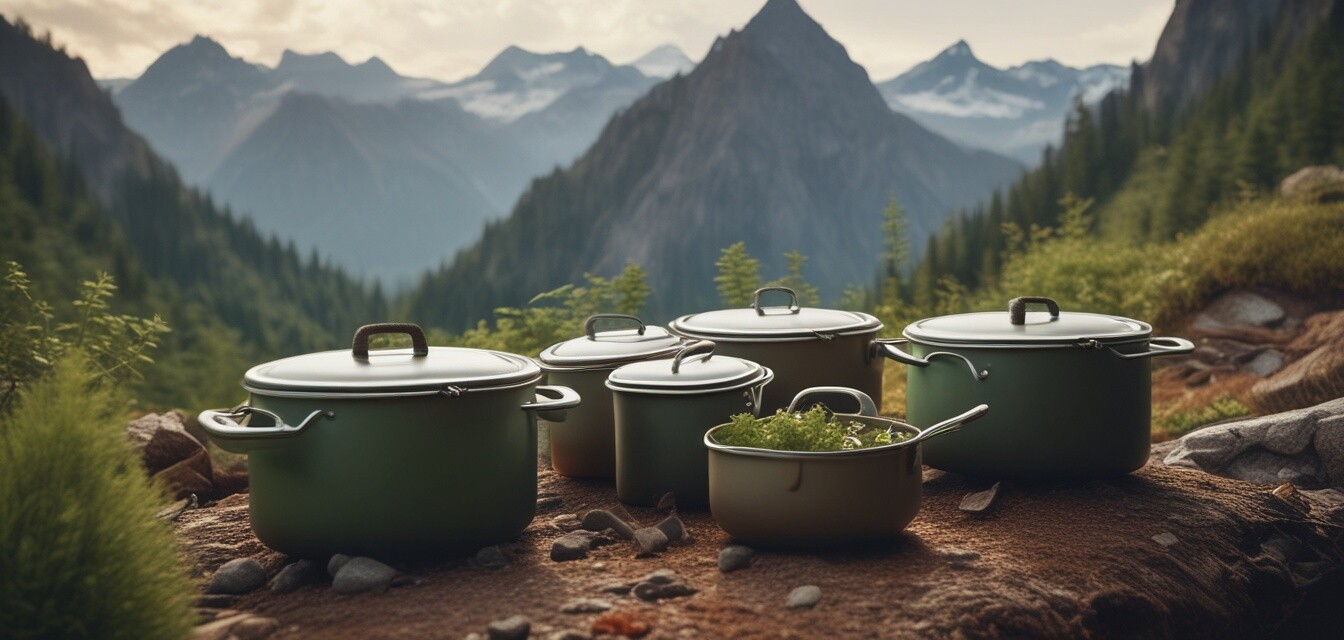
As an Amazon Associate, I earn from any qualifying purchases, at No Extra Cost to You.
How to Choose the Right Cooking Pot for Backpacking
Key Takeaways
- Material affects weight and cooking efficiency; consider options like aluminum and titanium.
- Size matters: choose based on the number of hikers and types of meals you plan to cook.
- Look for features like non-stick surfaces and folding handles for ease of use.
- Evaluate your cooking needs: fast boiling, simmering, or cooking for groups.
- Explore our comprehensive cooking gear selection to find the best pots.
Choosing the right cooking pot for backpacking is essential for a streamlined outdoor cooking experience. Whether you enjoy hearty meals after a long hike or a warm beverage during chilly nights, the choice of pot can dramatically affect your adventure. In this guide, we’ll explore key factors to consider when selecting your cooking pot, including material, size, features, and more.
Understanding materials
The material of your cooking pot can significantly influence its performance, such as heating time, weight, and durability. Let's break down the most common materials used in backpacking cooking pots:
| Material | Weight | Heat Conductivity | Durability | Cost |
|---|---|---|---|---|
| Aluminum | Lightweight | Fast | Moderate | Low |
| Titanium | Very lightweight | Moderate | High | High |
| Stainless Steel | Heavy | Slow | Very High | Moderate |
Sizes for every adventure
Choosing the right size pot is crucial based on the number of people you're cooking for and the types of meals you want to make. Here are some guidelines:
- Individual Uses: A pot size of 0.5 to 1 liter is usually sufficient.
- For Two People: Look for pots ranging from 1 to 2 liters.
- Group Cooking: Larger pots (2-4 liters) are great for making meals for three or more.
Popular cooking methods
Consider the cooking methods you intend to use, as they could influence your pot choice:
- Boiling water: Fast travel pots are excellent for boiling.
- Simmering: Look for pots with thicker bases for even heat distribution.
- Cooking for groups: Larger pots with handles to facilitate transport and stability.
Features to consider
When selecting a cooking pot, certain features may enhance your cooking experience:
| Feature | Benefits |
|---|---|
| Non-stick Surface | Easier cleanup and less food sticking |
| Folding Handles | Compact storage and easier transport |
| Integrated Measuring Marks | Convenient for cooking precise portions |
Compatibility with sleeping pads and other cooking gear
Choosing a pot that fits well with your other cooking gear is crucial. Consider the space you have and how different items stack for easy transportation. Ensure that it pairs well with your sleeping bags and pads for comfortable camping experiences.
Tips for beginners
- Start with a basic aluminum pot, which is lightweight and budget-friendly.
- Test your pot at home to understand cooking times and meal prep.
- Always carry a pot lid; it saves fuel and cooks faster.
- Don’t forget utensils and a cleaning sponge!
In summary, picking the right cooking pot for backpacking requires careful consideration of material, size, features, and compatibility with other gear. For more information on other essential gear, be sure to visit our backpacking buying guides for further insights.
Pros
- Lightweight options available for easy transport
- Variety of sizes to suit different group sizes
- Durability varies to meet different cooking styles
Cons
- Some materials can be more expensive
- Cooking times can vary by material
- Lack of advanced features in cheaper models
